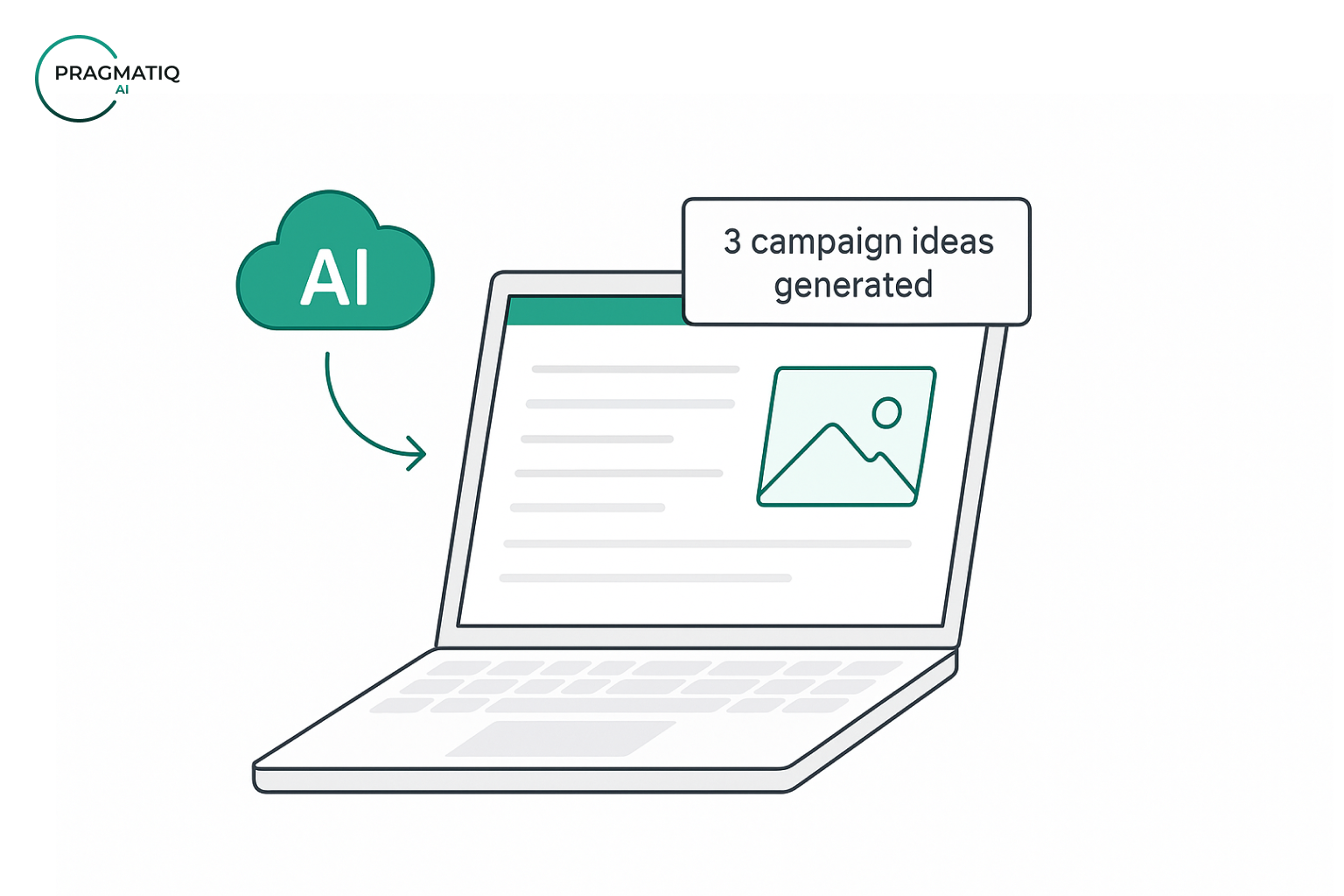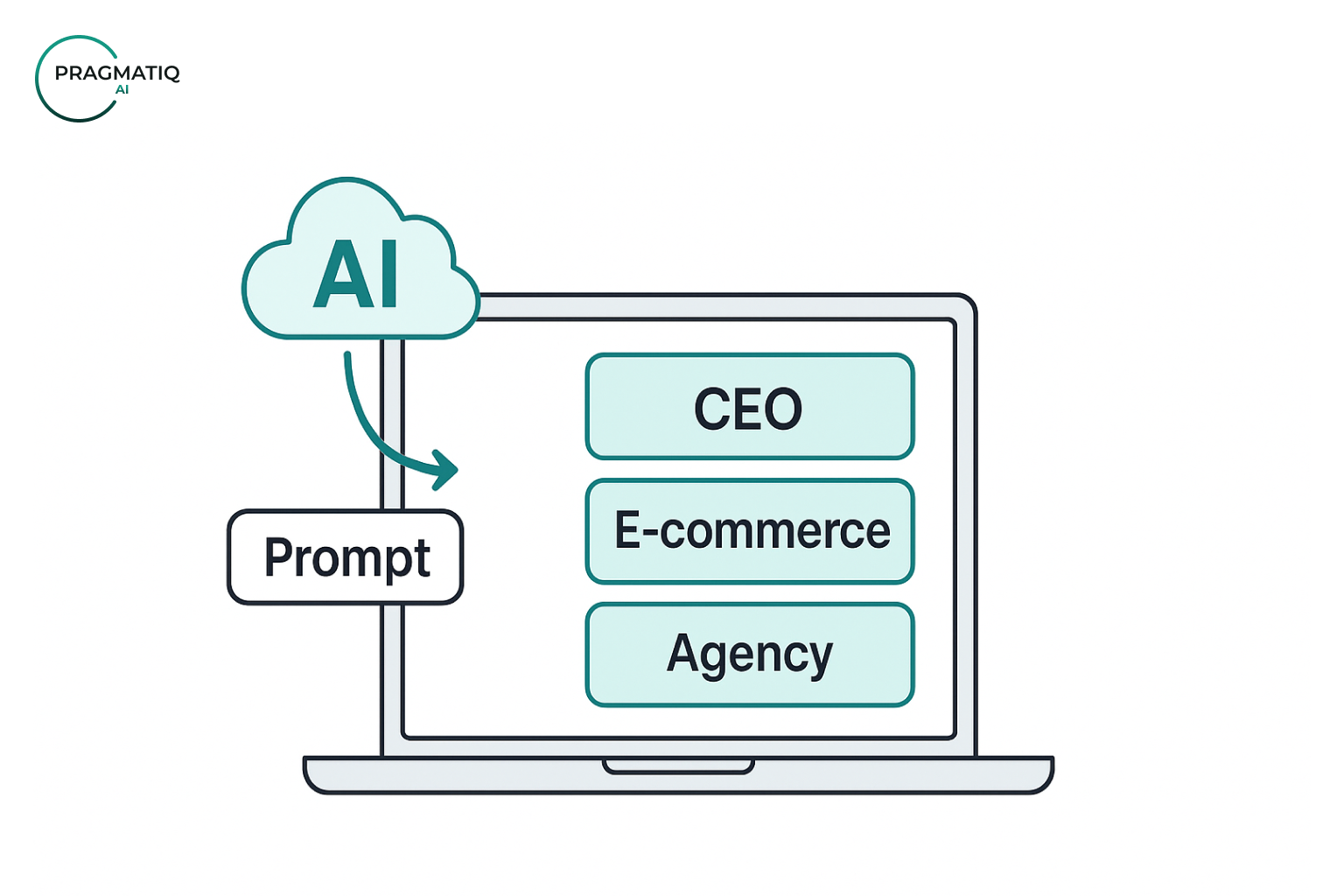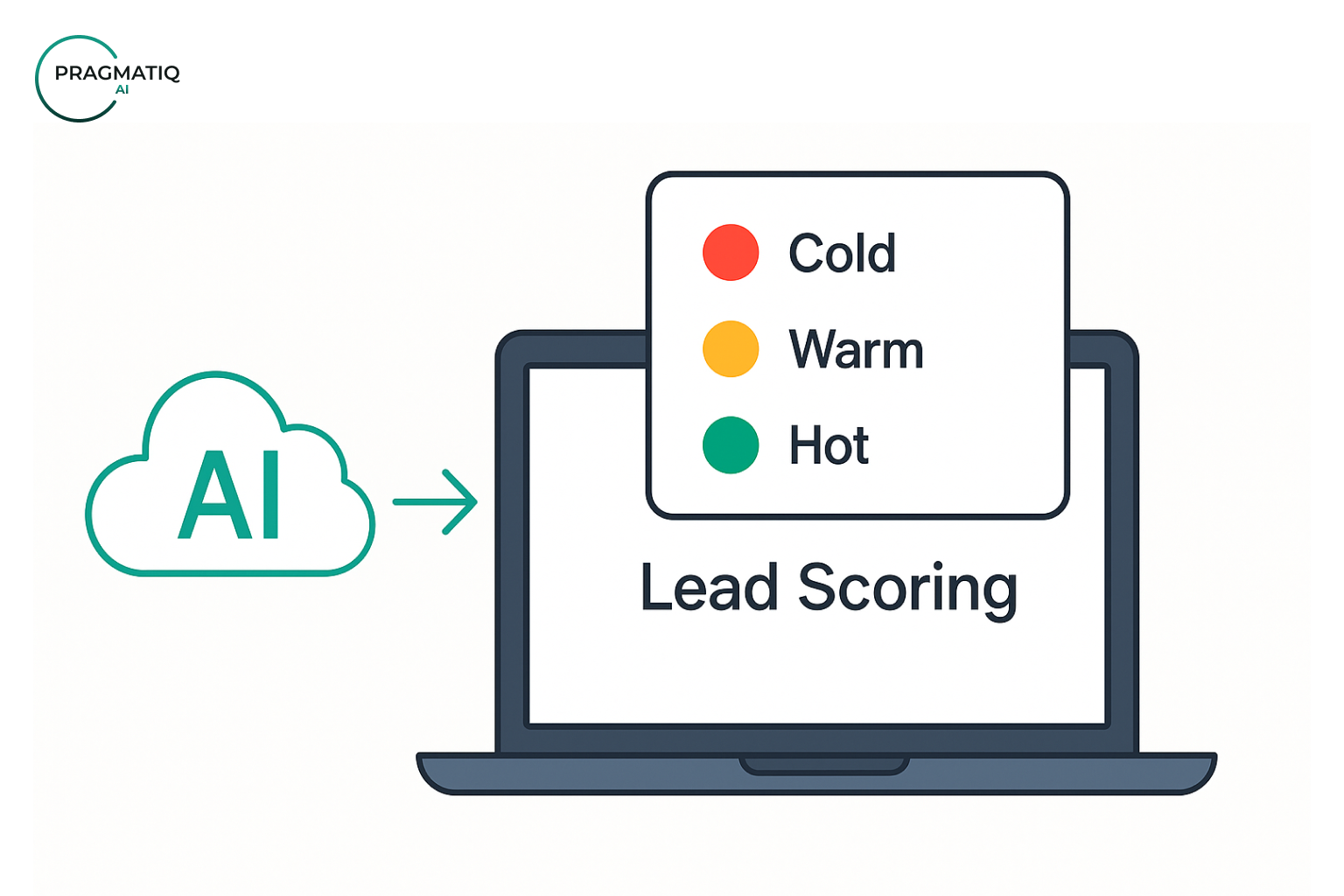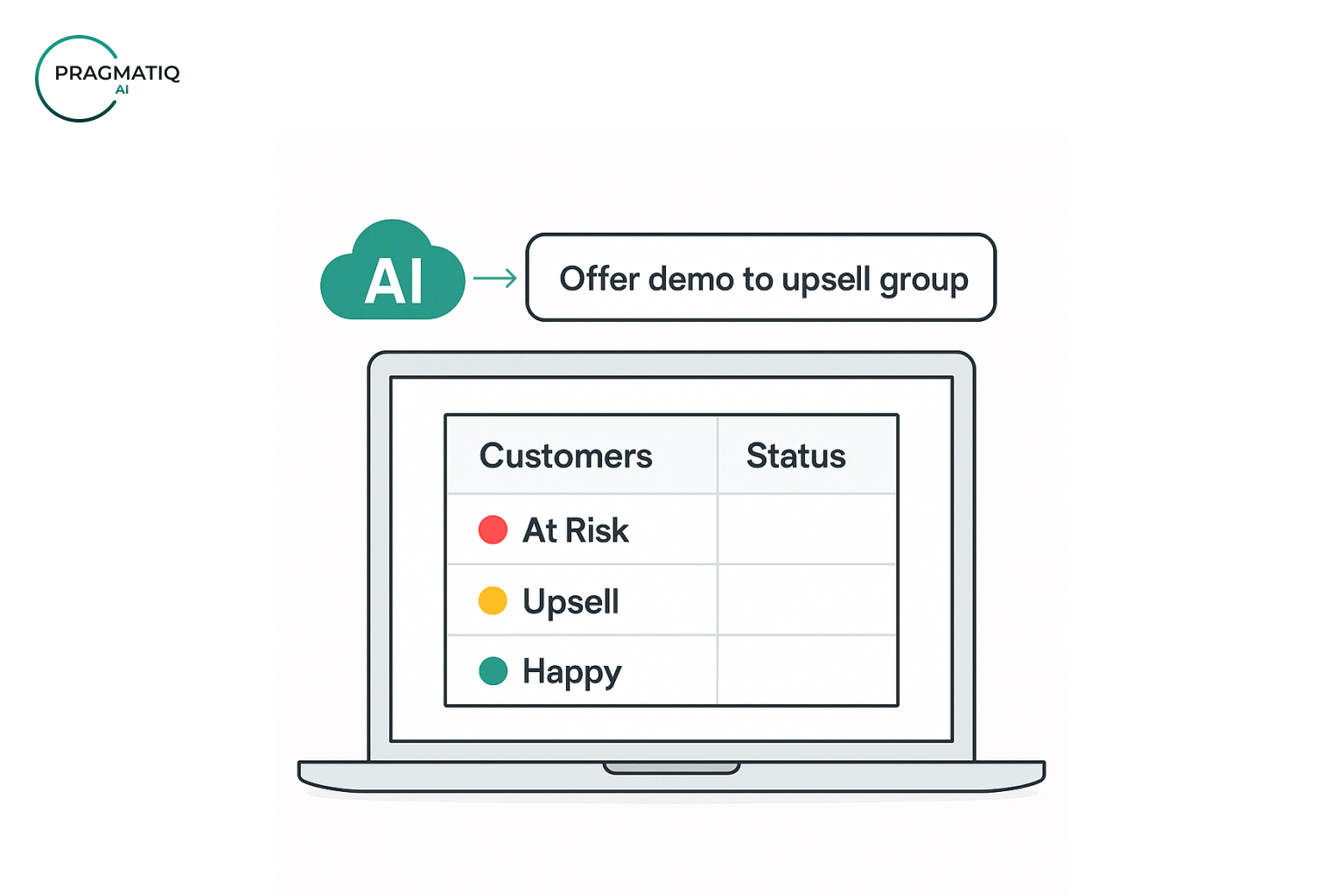Nowdays marketing and sales teams have a tough job: they need to be creative writers, data experts, and relationship builders all at the same time. Unlike other business areas where you can see clear progress steps, marketing success depends on understanding how customers think, spotting market changes, and building connections with lots of people.
Today, marketing teams use 15+ different tools, watch 50+ different numbers, and try to write personal messages for thousands of potential customers at once.
Today, marketing teams use 15+ different tools, watch 50+ different numbers, and try to write personal messages for thousands of potential customers at once.
The competition is real: 78% of companies already use AI in their marketing and sales, and early adopters are pulling ahead. But the good news is you don’t need a big budget or tech team to start. The key is to focus on your main challenges and apply AI step by step.
Why Marketing Teams Need AI More Than Other Departments
- Too Much Data, Not Enough Time. Marketing generates more data than any other function — every click, search, or abandoned cart leaves a digital trace. Without AI, teams spend hours pulling reports instead of finding opportunities.
- Customers Expect Personalization. Modern buyers don’t want generic ads — they expect tailored experiences. Surveys show that 77% of people welcome AI-powered recommendations, but nearly 70% worry about privacy. This makes AI not just a personalization engine but also a tool to balance trust, compliance, and relevance at scale.
- Creativity Meets Analytics. Marketing is no longer just about catchy slogans. Teams must blend creative storytelling with performance metrics. AI takes over the heavy number-crunching, so marketers can focus on strategy, content, and customer connection — the things machines can’t replicate.
- Speed Decides the Winner. Markets change in real time. What worked yesterday may flop tomorrow. AI tools cut content creation time by up to 84%, giving teams the ability to test, adapt, and relaunch campaigns in hours, not weeks. In today’s market, speed equals survival.
8 Ways AI Can Transform Your Marketing Results
1. Smart Campaign Ideas and Planning

Instead of spending weeks in brainstorming sessions, AI can generate complete campaign plans in under an hou
Example prompt:
“Create a marketing campaign for our project management software for small businesses. Target: startup founders and small agencies, 25–40 years old. I need 3 campaign concepts, headlines, key messages, suggested channels, and success metrics.“
Quick results: a ready-to-use campaign outline that normally takes two weeks, now done in 30–60 minutes. Teams launch campaigns faster and with consistent messaging.
Long-term value: Teams launch campaigns 60% faster and keep their messaging consistent across all channels.
2. Personal Messages for Everyone

AI personalizes messages for hundreds of prospects without extra manual work.
Example:
“Write LinkedIn connection messages for three audiences: SaaS founders (scaling issues), online store owners (cart abandonment), and agencies (time-consuming reporting). Tone: professional but friendly, 60 words."
Results: professional, tailored messages created in minutes, improving reply rates by 25–35% and cutting content creation time almost in half.
3. Smart Lead Scoring and Follow-Up

AI automatically ranks prospects and builds follow-up sequences.
How it works: Upload your sales data to see which lead types usually become customers, then create scoring that updates automatically.
Example prompt:
“Analyze our past 200 deals. Identify signs of high-value customers (company size 50–200, visited pricing page 3+ times, downloaded ROI calculator). Create follow-up sequences for hot, warm, and cold leads.”
Results: leads are automatically prioritized, conversion rates rise 30–40%, and sales cycles become 25% shorter.
4. Watching Competitors and Market Position

AI tracks competitors and gives actionable insights.
Example:
“Monitor our top 3 competitors. Check blog topics, posting frequency, social engagement, product launches, and reviews. Recommend content gaps we can fill and how to adjust our pricing.”
Impact: 80% less time spent on research, faster reaction to competitor moves, and 30% higher win rates.
5. Customer Journey Mapping and Optimization

AI maps customer behavior and suggests improvements at every step.
How to use: Give AI your customer interaction data to find where you can improve.
Example prompt:
“Analyze our customer journey data. Show where prospects drop off, which steps perform best, and what content works at each stage. Suggest improvements for awareness, consideration, decision, and retention.”
Results: clearer journeys, better timing for sales contact, and 50–70% higher customer lifetime value.
6. Real-Time Campaign Optimization

AI constantly watches your ads and suggests adjustments.
Example:
“Analyze our Google Ads. If CTR < 2%, suggest new ad copy. If cost per lead > €50, adjust bids. If engagement is high but sales are low, suggest landing page improvements.”
Results: daily improvement suggestions with specific actions, leading to 25–40% better conversion rates and 60% less manual monitoring.
7. SEO and Content That Ranks

AI doesn’t just suggest topics — it analyzes keywords, search trends, and competitor gaps to create content that performs.
How it works:
“Analyze keywords around project management software. Suggest 10 blog titles with target keywords, recommended word counts, and competitor gaps we can fill.”
Content results: teams double their organic traffic and produce content that consistently ranks higher in Google — without expensive SEO agencies.
8. Customer Retention and Upsell Prediction

AI predicts which customers might leave and which could upgrade.
Analysis approach:
“Analyze usage data and support tickets. Predict churn risk for the next 90 days and suggest upsell opportunities by customer type. Recommend outreach strategies for each case.”
Revenue impact: at-risk customers are contacted earlier, upsells succeed 60% more often, and retention improves by 50%.
Choosing the Right AI Tools for Marketing
General-Purpose Models (ChatGPT, Claude, Mistral)
These are flexible tools that can help with almost anything: writing ads, emails, blog posts, or product descriptions. They are great for brainstorming ideas and keeping your brand voice consistent. The only downside is that they are not built just for marketing, so you need to give them clear instructions.
General-Purpose Models (ChatGPT, Claude, Mistral)
If your company already uses Google or Microsoft, these are the easiest to start with. Google Gemini connects to Ads and Analytics, while Microsoft Copilot works inside Outlook, Teams, and Word. They save time by adjusting your campaigns, managing budgets, and showing you simple reports without extra effort.
Specialized Marketing AI
There’s no single ‘best AI tool.’ The right choice depends on your size, budget, and goals. For example:
- Jasper AI → helps teams write content in the same style and tone.
- Copy.ai → creates sales messages and landing pages.
- Klaviyo → built for online stores, with smart product suggestions and customer emails.
- AdCreative.ai → makes ready-to-use ad designs.
And there are hundreds more — for video, social media, and customer feedback. The key is to start with the ones that solve your biggest pain points
Scaling by Budget
You don’t need a big budget to start:
- Small teams (€100–300/month): pick 1–2 tools that give fast results, like AI for content or ads.
- Medium companies (€2,000–8,000/month): combine general models, ecosystem AI, and a few specialized tools.
- Large businesses (€15,000–50,000/month): get custom AI systems with full support for complex campaigns.
How to Start Using AI in Your Marketing
Phase 1: Foundation (Weeks 1-4)
Start simple with immediate wins. Set up an AI assistant such as ChatGPT Plus (~€20/month) and create ready-to-use templates for emails, reports, and social posts. Begin using AI to draft newsletters, FAQs, and multilingual responses. The focus here is on one or two repetitive tasks that currently take too much time. This phase alone can save you 3–5 hours every week.
Phase 2: Knowledge Integration (Month 1)
Once the basics are in place, build a foundation of knowledge for AI to work with. Collect your FAQs, policies, product documentation, and past campaigns into one central knowledge base. Use AI to analyze this content, summarize insights, and identify gaps. At this stage, AI can also process long documents such as competitor reports or customer surveys, turning them into clear action points and helping you keep messaging consistent.
Phase 3: Smart Automation (Month 2)
The next step is moving from insights to predictions. Export recent campaign and customer data, then let AI detect patterns such as which leads convert, which customers are at risk of leaving, or where campaigns underperform. Set up automated dashboards and reports that refresh daily or weekly without extra effort. Add sentiment analysis to see how customers respond across channels. By the end of this phase, teams make decisions 20–30% faster and spot problems before they escalate.
Phase 4: Integration & Actions (Month 3+)
Finally, connect AI directly to your existing systems. Link it with your CRM, helpdesk, or ad manager through available integrations and APIs. Configure it to take actions automatically: updating customer records, checking order statuses, or scheduling follow-up tasks. Implement real-time alerts for sudden performance drops, volume spikes, or VIP customer activity. By month three, companies typically see 5–20% faster resolution times and measurable ROI growth.
ROI Summary:
- 3–5 hours/week saved instantly in the first phase.
- First major escalation or lost opportunity prevented within one month.
- 5–20% faster resolution and measurable cost savings by month three.
- Up to 30% more efficient campaigns and higher lead conversion within six months.
What's Coming Next in Marketing AI
- AI agents will run campaigns by themselves by 2025. Experts predict that 25% of big companies will use AI agents by 2025, with these systems automatically optimizing campaigns, adjusting targeting, and even creating new ad versions based on performance data. Early tests show 40-60% better campaign efficiency when AI agents handle routine optimization tasks.
- Video creation becomes easy for everyone. Tools like Google's Veo 3 and OpenAI's Sora will make video production accessible, letting small marketing teams create professional-quality videos at scale. This is a big shift from just text and images to complete multimedia marketing campaigns.
- Privacy-focused AI becomes essential for customer trust. As 82% of consumers worry about AI's privacy impact, successful marketing AI will emphasize transparency, consent, and value exchange. New technologies will enable personalization without compromising individual privacy.
- Real-time personalization will predict what customers want before they ask. Future AI systems will anticipate customer needs using behavior patterns, market signals, and context to deliver perfectly timed, relevant experiences across all touchpoints.
- AI will connect all marketing channels. Integrated AI platforms will manage customer experiences across email, social media, advertising, and in-person interactions, ensuring consistent messaging and smart resource allocation regardless of where customers prefer to interact.
Transform Your Marketing Results Today
AI in marketing is no longer optional — it’s a proven way to cut costs, save time, and win more customers. The smartest teams start small, apply AI where it matters most, and scale step by step. If you want to explore how AI can work for your business, our team at Pragmatiq AI is ready to help with practical strategies and hands-on guidance.
Ready to multiply your marketing results?
- Free 60-minute consultation — Analyze your current marketing challenges and identify highest-impact AI opportunities
- 2-day intensive training — Transform your team into confident AI users with hands-on applications using your actual campaigns and data
Contact us to discuss how AI can transform your marketing efficiency and results.
FAQ — Marketing Teams' Most Common AI Questions
1. Will AI replace our creative team's strategic thinking? No. AI handles repetitive work like data analysis, optimization, and drafting content. Your team still leads on strategy, creativity, and customer insight.
2. How do we keep our brand voice consistent with AI-generated content? Train AI on your best content, create clear brand voice guidelines, and always review generated drafts before publishing.
3. Is AI useful for small teams too? Absolutely. Solo marketers often get the biggest benefits — AI saves time and covers tasks they don’t have capacity for.
4. How do we measure AI’s real impact? Start with simple before/after metrics: time saved, campaign ROI, or conversion rates. Expand to more detailed attribution once you scale.
5. Can AI help with compliance and privacy regulations? Yes. AI can automate consent management, anonymize sensitive data, and keep campaigns compliant — while still personalizing at scale.
